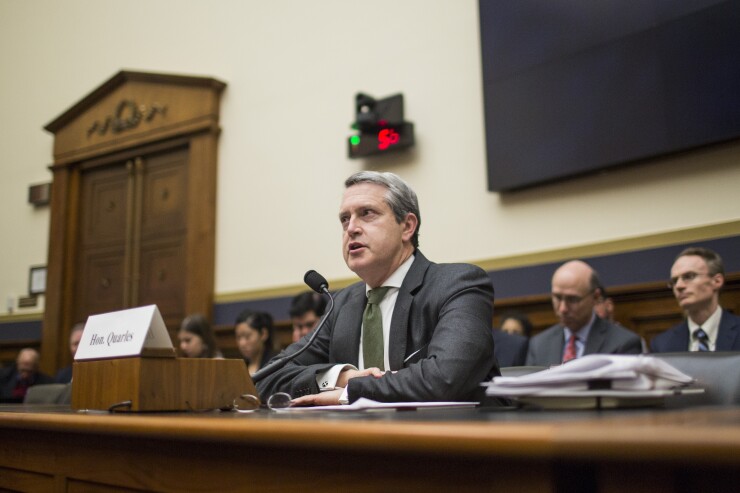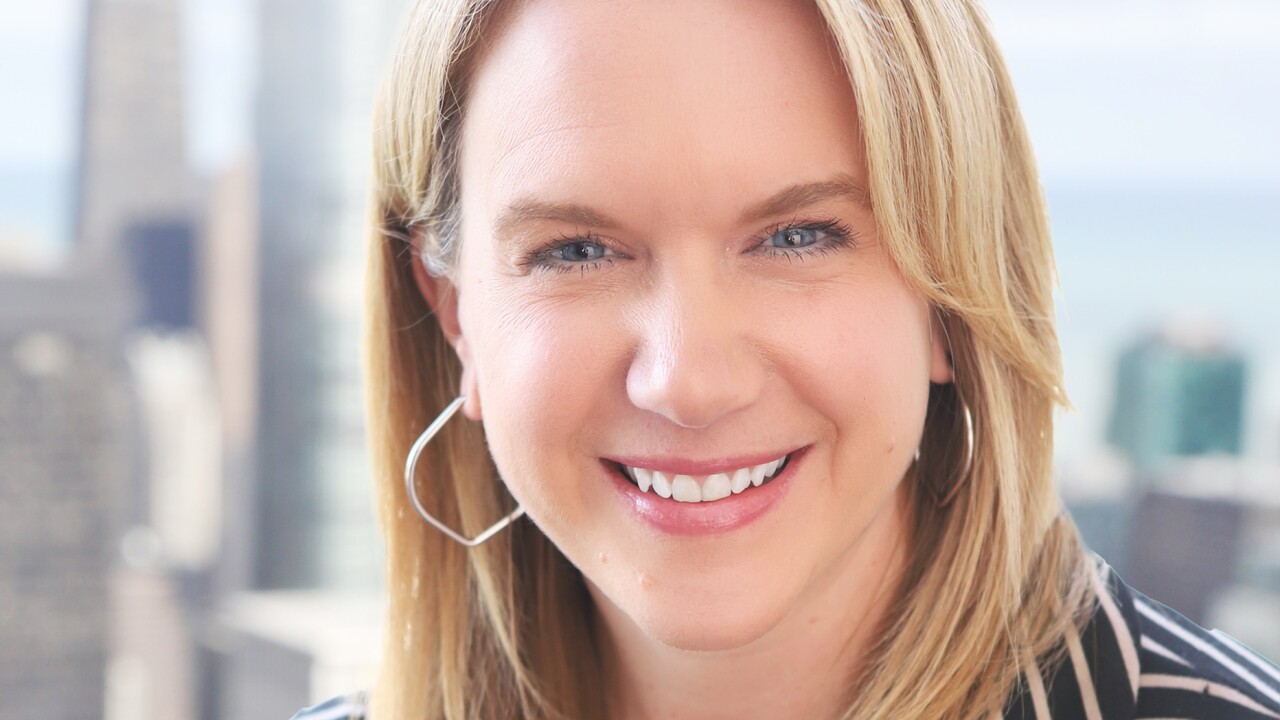WASHINGTON — As revisions to the
Industry representatives and even regulators say the examination process remains too subjective. A bank's supervision experience is substantially affected by examiner discretion, which can vary widely across regions and agencies. While regulators' Washington leadership say they want consistency, critics say examiners on the ground have too much latitude.
Greg Baer, CEO of the Bank Policy Institute, said banks routinely complain that supervisors flag things amounting to organizational preferences, not safety and soundness threats. Examiners cite guidance as the basis for "Matters Requiring Attention" or "Matters Requiring Immediate Attention," Baer said, even though agency leaders

“You shouldn’t have immaterial MRAs, because they’re de facto enforcement actions,” Baer said. “Every bank knows you have to remediate your MRAs, or else it could affect your management rating, and eventually they’ll put you in the penalty box. What it amounts to is a secret enforcement regime by MRA.”
The BPI and the American Bankers Association earlier this month sent a letter to the bank regulators asking them to
“I think what’s going on here, unfortunately, is that in this administration, the lobbyists feel much more empowered to chip away,” said Mayra Rodriguez Valladares, managing principal at MRV Associates. “And they’re chipping away by not only by lobbying legislators, but basically lobbying the supervisors.”
But Baer said despite the joint statement issued in September declaring that guidance documents cannot serve as the basis of an enforcement action, banks are continuing to receive MRAs for relatively trivial matters.
“What we’re really all about here is, if you’re going to give somebody an MRA, it has to be something pretty serious,” Baer said. “The more important thing is having a high, clear standard for what qualifies for an MRA, and a subset of that is that a violation of guidance is not per se an MRA.”
Each bank, as a condition of receiving deposit insurance and a government charter, is subject to supervision, and that supervision is intended to ensure, among other things, that the bank upholds standards associated with “safety and soundness.”
The regulatory agencies have
But there has always been a degree of intuition required on the part of the individual examiner or team of examiners assigned to a bank.
Julie Williams, a former senior official at the Office of the Comptroller of the Currency who now works at the consulting firm Promontory Financial Group, said examiners have discretion about what to write up as an MRA precisely because the circumstances vary so much from institution to institution.
“The issuance of an MRA, for example, is not a cookie-cutter exercise,” Williams said. “It depends on the [examiner’s] judgment about the seriousness of the problem, the capacity of management to handle it, the extent to which management is already handling it. You can have a ‘problem’ that gives rise to an MRA in one institution but not in another because the circumstances differ between the two institutions.”
Since specific MRAs and MRIAs are confidential, there is no way to independently judge if such findings are superfluous. However, the Federal Reserve's inaugural
But an official at one bank who is not authorized to speak on the record said supervisors have such wide latitude that they undertake horizontal reviews — that is, comparing banks to one another — and then choose an organizational structure that they prefer in order to criticize the banks with a different process.
“You have — and we see this with some frequency — where MRAs are written not based on the regulation, and it doesn’t necessarily tie back into the statute, and it isn’t necessarily plugged into guidance,” the official said. “It is simply examiner preference.”
The goal of addressing this inconsistency is not to neuter the supervisory process, the official said, but rather to put the relationship back into balance by requiring supervisors to use the statute and rules as the basis for MRAs.
“We don’t want to have contentious relationships with our examiners,” the official said. “In fact, the best relationship you can have with an examiner … is one where there is good dialogue, there is respect going both ways, there is cordiality, and there is legitimate debate. But until very recently, the practice has been that examiners expect that whatever they say, we’re just going to go ahead and do it as they say.”
There is some evidence that regulators are starting to ask questions about the process themselves.
Kevin Stiroh, who heads the supervisory program at the Federal Reserve Bank of New York, said in a speech earlier this month that supervisors need to be careful not to push horizontal reviews too far, because there are systemic risks associated with making banks too similar. Instead, supervisors need to evolve with banks as they develop new strategies and business lines, he said.
“As firms evolve and pursue new strategies, supervisors need to understand those changes and assess firms accordingly,” Stiroh said. “We must constantly evaluate the strategic focus of the firms we supervise and assess whether our approach and perspective are appropriate for the new activities.”
Jelena McWilliams, chairman of the Federal Deposit Insurance Corp., noted the possible benefits of technology such as artificial intelligence to be a "great equalizer" to address regional variation in the examination process.
With “some of the human idiosyncrasies that you may encounter … an examiner in Atlanta may look differently at a bank than an examiner in San Francisco,” McWilliams said. “The technological advances could probably provide an even playing field there.”
Entangled in the matter of whether certain MRAs may or may not be appropriate is the broader question of what role guidance ought to play in supervision.
Quarles broached this subject last week during his semiannual testimony before Congress, when he said the agencies’ 2013
“Guidance is guidance,” Quarles said. “Guidance is intended to provide transparency, but it's not something that can be enforceable, it's not a rule.”
Williams said that agency guidance can cross a line when it becomes overly prescriptive — acting more like a rule than guidance.
“There is a gray area in how specific guidance can get before it crosses a line where it would be covered by various rulemaking standards,” Williams said. “The essence of the sense of issuing a guidance is to better inform the impacted industry about the agency’s thinking on issues.”
The Fed, OCC and FDIC ran into precisely that problem last year when the Government Accountability Office decided that the agencies’ 2013
Rodriguez said banks may ultimately regret it if the agencies write a rule taking teeth out of guidance because it could effectively leave regulators no choice but to have to write more rules, which are inherently more prescriptive and rigid.
“It’s counterproductive for the banks to say, ‘We don’t want guidance’ … because you’re leaving the regulators with two options,” Rodriguez said. “Either they say, ‘Fine, we won’t do much,’ and then the banks get into trouble, or eventually regulators will have to propose a rule … that is more binding and is more prescriptive, which they’re going to like even less.”
But supervision is a nuanced exercise that requires balancing the approach of an individual supervisor, the agency's rules and the laws that they enforce, and the guidance documents that give both banks and the supervisory regime clarity and consistency.
“I wouldn’t want to turn the examination process into a checklist, where if an issue isn’t on the checklist, then it can’t be raised,” Williams said. “The requirements of safety and soundness and fair treatment of customers are more subtle than what you can reduce to a checklist.”





